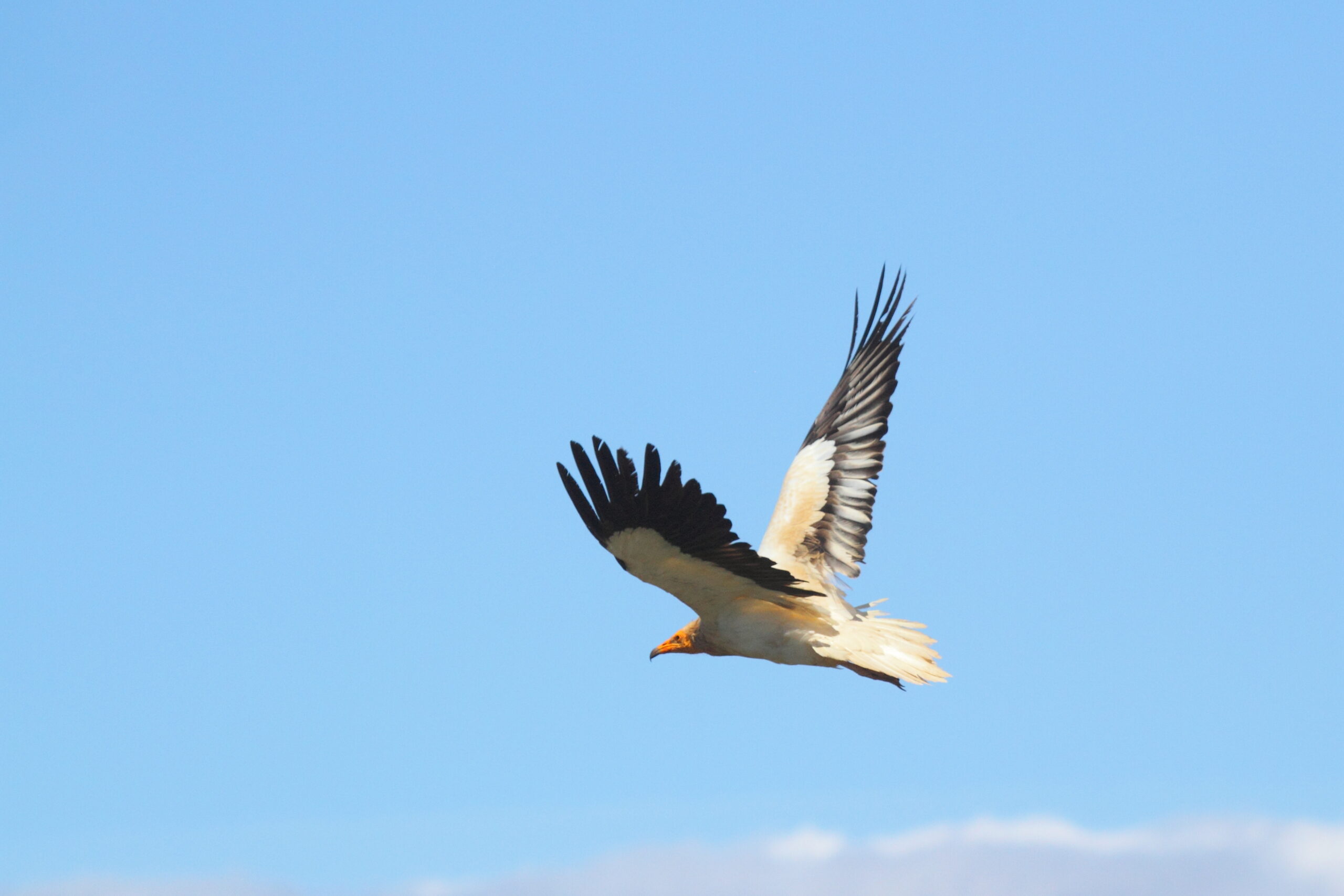In February 2015 an Egyptian vulture was found dead by Ethiopian authorities in the southeastern corner of the country, near the border with Somalia. This was not an average bird. Igdir, a female, was named after
the province in Eastern Turkey where she was captured in 2012. She was wearing a small GPS unit that
transmitted her exact location several times a day. This unit, provided by the General Directorate for Nature Conservation and National Parks (GDNCNP) of the Turkey’s Ministry of Forestry and Water Affairs, was deployed by biologists from the Turkish nature conservation organization KuzeyDoga, in collaboration with Turkey’s Ministry of Forestry and Water Affairs and the University of Utah, in order to study the movements and migrations of this species for the first time in Turkey.
The Egyptian vulture has experienced one of the fastest declines in the conservation status of any animal worldwide, having gone from Least Concern to Globally Endangered in 2007, according to the International Union for the Conservation of Nature (IUCN). Little is known about its ecology in the Middle East and Africa. By studying the movements of Igdir, we were able to determine summer and winter ranges, migration routes, breeding territories, and foraging grounds in order to better help conserve this endangered species. In the past 3 years, 12 Egyptian vultures total have been tagged in Turkey and Ethiopia with GPS tracking devices for this research project, led by Evan Buechley, from the Biodiversity and Conservation Ecology Lab (University of Utah) in collaboration with Turkey’s GDNCNP, the Ethiopia Wildlife Conservation Authority and the VCF.
Igdir bred each of the last three years in Turkey, then, each fall, migrated south over the Arabian Peninsula to winter in the Horn of Africa. She traveled 60,000 kilometers in the past 3 years, visiting 11 countries: Turkey, Armenia, Iraq, Syria, Jordan, Saudi Arabia, Yemen, Djibouti, Eritrea, Ethiopia, and Somalia. Igdir was the oldest and most experienced Egyptian vulture of the ones we tracked. She demonstrated her experience during migration, following almost the same path each time she traveled the 4,000 plus kilometers between
Turkey and Ethiopia (see map). This perfect directional instinct can be better appreciated when considering that vultures need warm air thermals to migrate and bad weather conditions could easily blow them off course.
Sadly, on February 28, 2015, the local police found Igdir dead in the Somali Region of Ethiopia, very near the border with Somalia. Because of the heightened security situation in this region, the authorities were suspicious that the bird was carrying some sort of spying device. The transmitter that this bird is carrying relays its location, but does not relay any images or other information that could be used for spying.
The Egyptian vulture has undergone an extremely rapid global decrease in its population over the last several decades. The population decreased by half in the last 42 years in Europe and populations in India collapsed in the 1990’s after being poisoned by medicines used to vaccinate cattle, including diclofenac and ketoprophen. Threats to Egyptian vultures include habitat loss, intentional and unintentional poisoning, direct persecution, nest destruction, and collisions with power lines and wind turbines. Furthermore, the species is declining due to a reduction in the availability of suitable food. This has occurred with the loss of traditional animal husbandry practices, the closure of open butcheries and garbage dumps, and the decline of wild animals.
If you want to support this research programme, please donate at http://www.gofundme.com/vulture
The VCF is working to conserve Egyptian vultures in Turkey and elsewhere.



